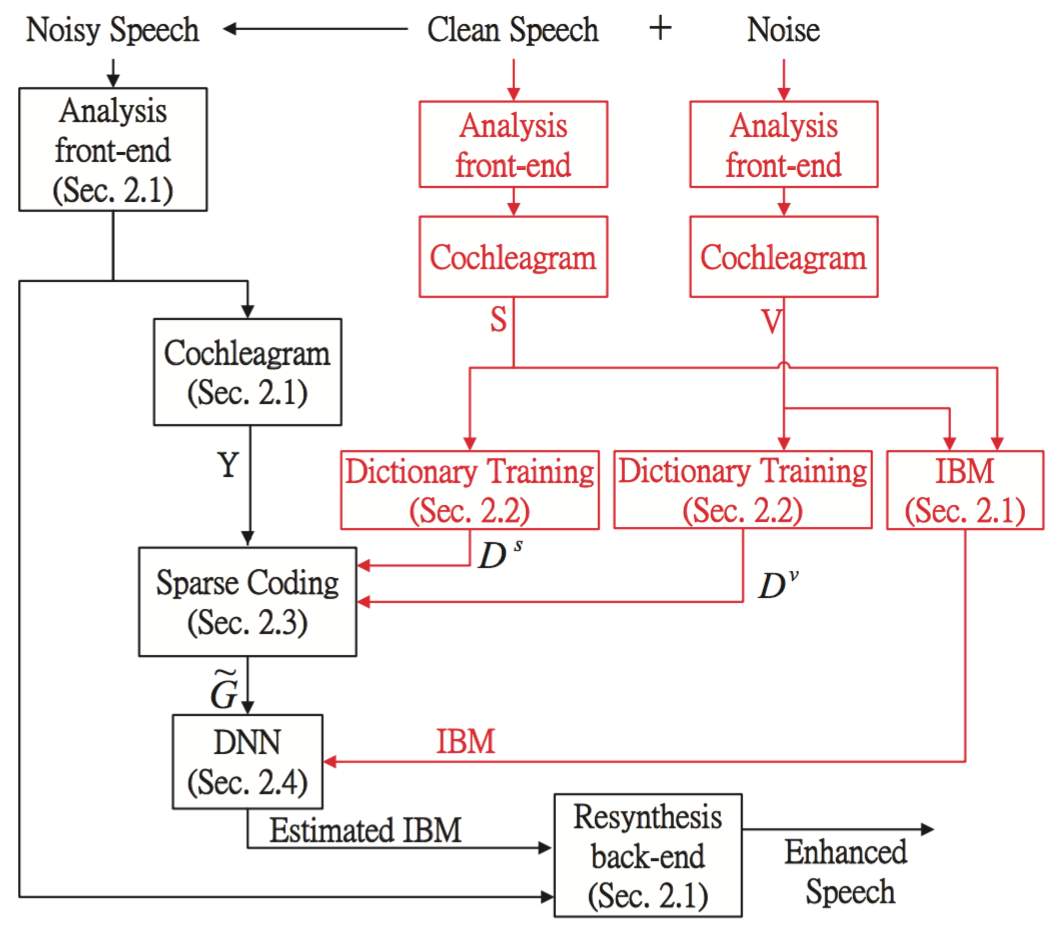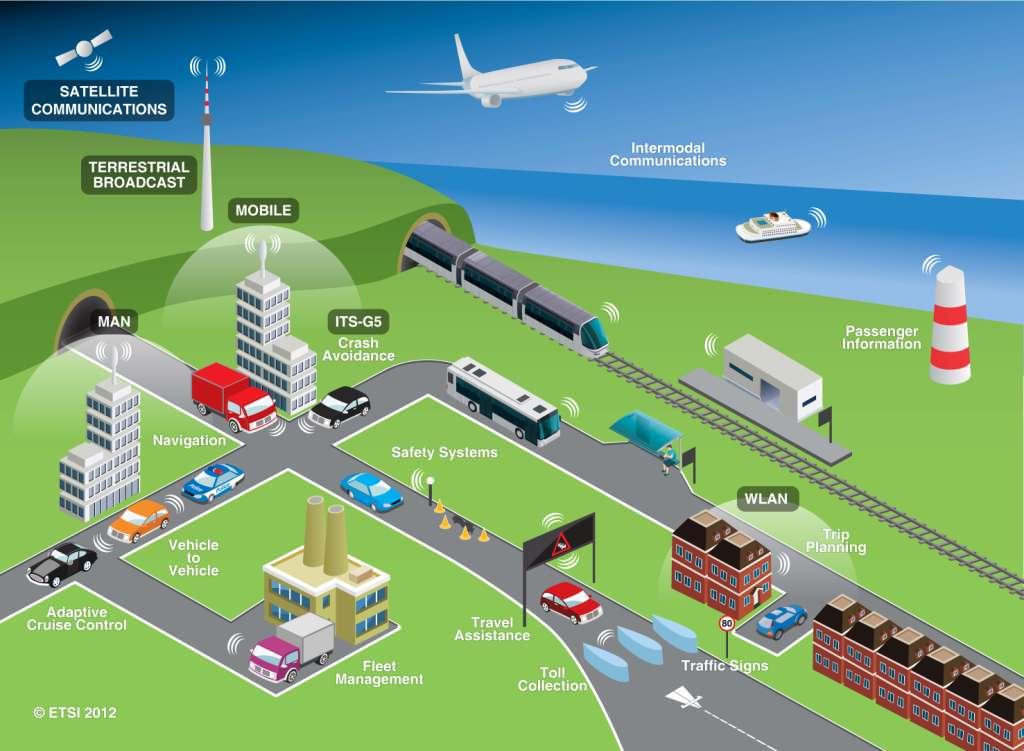Group - Research
Optimization Theory and Analysis
 |
SynopsisLarge-scale optimization has recently attracted significant attention not only from the optimization community, but also from the machine learning, statistics as well as the signal processing communities. Traditional general purpose optimization tools are inadequate for these problems due to the complexity of the model, the heterogeneity of the data, and most importantly the sheer data size. Modern large-scale optimization algorithms, especially those that are capable of exploiting problem structures, dealing with distributed, time varying and incomplete data sets, utilizing massively parallel computing and storage infrastructures, have become the workhorse in the big data era. (Image source: [1]) |
Selected Publications
Mingyi Hong *, Meisam Razaviyayn*, Zhi-Quan Luo and Jong-Shi Pang, “A Unified Algorithmic Framework for Block-Structured Optimization Involving Big Data”, IEEE Signal Processing Magazine (* equal contribution), Vol. 33, No. 1, pages 57 - 77, Jan. 2016; available at [arXiv.org] Feature Article
Mingyi Hong, Zhi-Quan Luo and Meisam Razaviyayn, “Convergence Analysis of Alternating Direction Method of Multipliers for a Family of Nonconvex Problems”, SIAM Journal on Optimization, Vol. 26, No 1, pages 337 - 364, 2016; available at [arXiv.org] Finalist, Best Paper Prize for Young Researchers in Continuous Optimization, 2016
Meisam Razaviyayn, Mingyi Hong and Zhi-Quan Luo, “A Unified Convergence Analysis of Block Successive Minimization Methods for Nonsmooth Optimization”, SIAM Journal on Optimization. Vol. 23, No. 2, pp. 1126–1153ï¼2013; available at [arXiv.org] Finalist, Best Paper Prize for Young Researchers in Continuous Optimization, 2013
[More Related Publications and Codes]
Machine Learning
 |
SynopsisOptimization approaches have enjoyed prominence in machine learning because of their wide applicability and attractive theoretical properties. The increasing complexity, size, and variety of today"s machine learning models call for the reassessment of existing assumptions, such as first-order methods, stochastic approximations, convex relaxations, interior-point methods, and proximal methods. It also devotes attention to newer themes such as regularized optimization, robust optimization, gradient and subgradient methods, splitting techniques, and second-order methods. (image source: closeupengineering, text source: Sra, Suvrit, Sebastian Nowozin, and Stephen J. Wright. Optimization for machine learning. MIT Press, 2012.) |
Selected Publications
Meisam Razaviyayn, Mingyi Hong, Zhi-Quan Luo and Jong-Shi Pang, “Parallel Successive Convex Approximation for Nonsmooth Nonconvex Optimization”, Proc. NIPS 2014, (acceptance rate %24.67); [C code]; [arxiv]
Ruoyu Sun* and Mingyi Hong*, “Improved Iteration Complexity Bounds of Cyclic Block Coordinate Descent for Convex Problems”, Proc. NIPS 2015 (* equal contribution, acceptance rate %21.92); available [here]
Davood Hajinezhad, Mingyi Hong, Tuo Zhao, and Zhaoran Wang. “NESTT: A Nonconvex Primal-Dual Splitting Method for Distributed and Stochastic Optimization.”; available [arXiv.org]
Xingguo Li, Jarvis Haupt, Raman Arora, Han Liu, Mingyi Hong, and Tuo Zhao. “A First Order Free Lunch for SQRT-Lasso.”; available [arXiv.org]
Qingjiang Shi, Haoran Sun, Songtao Lu, Mingyi Hong and Meisam Razaviyayn. “Inexact Block Coordinate Descent Methods For Symmetric Nonnegative Matrix Factorization”;
Brendan Ames and Mingyi Hong, “Alternating direction method of multipliers for sparse zero-variance discriminant analysis and principal component analysis”, To appear in Computational Optimization and Applications. [R code][MATLAB code][arxiv]
Xiao Fu, Kejun Huang, Mingyi Hong, Nicholas D. Sidiropoulos, and Anthony Man-Cho So. “Scalable and Optimal Generalized Canonical Correlation Analysis via Alternating Optimization.”; available [arXiv.org]
[More Related Publications and Codes]
Distributed Multi-Agent Systems and Applications
 |
SynopsisTo fully realize the blessing offered by increasingly availability of data, we face a few computational challenges. First, the sheer volume and the spatial-temporal availability of data makes it impossible to run analytics using central processors and storage. This happens, for instance, when the sheer volume of the data overwhelms the storage capacity of any single computer. Another example is when data are collected in a massively distributed manner, and sharing local information with central processors is either infeasible or not economical, owing to the large size of the network and volume of data, energy constraints, and/or privacy concerns. Thus, there is an urgent need of developing distributed in-network data processing and parallel optimization algorithms. (image source: rstreet) |
Selected Publications
Tsung-Hui Chang, Mingyi Hong and Xiangfeng Wang, “Asynchronous Distributed ADMM for Large-Scale Optimization- Part I: Algorithm and Convergence Analysis”, IEEE Transactions on Signal Processing, Vol. 64, No 12, pages 3118 - 3130, 2016; available at [arXiv.org]
Tsung-Hui Chang, Mingyi Hong and Xiangfeng Wang, “Multi-Agent Distributed Optimization via Inexact Consensus ADM”, IEEE Transactions on Signal Processing, vol.63, no.2, pp.482,497, Jan.15, 2015; available at [arXiv.org]
Tsung-Hui Chang, Wei-Cheng Liao, Mingyi Hong and Xiangfeng Wang, “Asynchronous Distributed ADMM for Large-Scale Optimization- Part II: Linear Convergence Analysis and Numerical Performance”, IEEE Transactions on Signal Processing, Vol. 64, No. 12, pages 3131 - 3144, 2016; available at [arXiv.org]
Mingyi Hong and Tsung-Hui Chang, “Stochastic Proximal Gradient Consensus Over Random Networks” available at [arXiv.org], Nov, 2015
[More Related Publications and Codes]
Next Generation Communication Networks
 |
SynopsisTo cope with the growing demand for wireless data and to extend service coverage, future 5G networks will increasingly rely on the use of low powered nodes to support massive connectivity in diverse set of applications and services. To this end, virtualized and mass-scale cloud architectures are proposed as promising technologies for 5G, in which all the nodes are connected via a backhaul network and managed centrally by such cloud centers. Therefore, joint interference management and network provisioning has been the key enabling technology for future 5G networks. We are interested in designing cross-layer optimization strategies, which jointly optimize parameters such as user admission, user-base station association, power control, user grouping, transceiver design as well as routing and flow control. |
Selected Publications
M.Baligh, M. Hong, W.-C Liao, Z.-Q Luo, M. Razaviyayn, M. Sanjabi, and R. Sun, “Cross-Layer Provisioning of Future Cellular Networks”, IEEE Signal Processing Magazine, special issue on 5G revolution, vol.31, no.6, pp.56,68, Nov. 2014; available at [arXiv.org]
Mingyi Hong and Zhi-Quan Luo,“Distributed Linear Precoder Optimization and Base Station Selection for an Uplink Heterogeneous Network”, IEEE Transactions on Signal Processing, Vol. 61, No. 12, pp. 3214–3228 , June, 2013; available at [arXiv.org]
Mingyi Hong, Ruoyu Sun, Hadi Baligh and Zhi-Quan Luo, “Joint Base Station Clustering and Beamformer Design for Partial Coordinated Transmission in Heterogeneous Networks”, IEEE Journal on Selected Areas in Communications, special issues on Large-Scale multiple antenna systems Vol. 31, No. 2, pp. 226-240, Feb. 2013; available at [arXiv.org]
Wei-Cheng Liao, Mingyi Hong, Ya-Feng Liu and Zhi-Quan Luo, “Base Station Activation and Linear Transceiver Design for Optimal Resource Management in Heterogeneous Networks”, IEEE Transactions on Signal Processing, VOL. 62, NO. 15, August 2014, pp.3939-3952; available at [arXiv.org]
Qingjiang Shi, Cheng Peng, Weiqiang Xu, Mingyi Hong, Yunlong Cai, “Energy Efficiency Optimization For MISO SWIPT Systems With Zero-Forcing Beamforming”, IEEE Transactions on Signal Processing, Vol. 64, No. 4 pages 842-854, 2016; available at [IEEE Xplore]
[More Related Publications and Codes]
Future Generation of Green Energy Systems
 |
SynopsisWe address the research problems in future green energy systems.
(image source: [here]) |
Selected Publications
Mingyi Hong and Hao Zhu, “Power-Efficient Operation of Wireless Heterogeneous Networks using Smart Grids”, Proc. SmartGridComm, 2014
Chao Hu, Mingyi Hong and Ha-Lim Jeong “On-Board Analysis of Degradation Mechanisms of Lithium-Ion Battery using Differential Voltage Analysis”, Proc. ASME IDETCT conference 2016
Yijian Zhang, Emiliano Dall'Anese*, Mingyi Hong, Sairaj Dhople, Zi Xu, “Regulation of Inverter-interfaced Renewable Energy Resources to Optimal Power Flow Solutions Using ADMM”, submitted for publication, 2016
[More Related Publications and Codes]
Hearing Aid Systems
 |
SynopsisEnhancing speech from a noisy recording is essential to designing many engineering systems such as hearing aids, mobile communication devices, and robust speech recognition systems. This problem is quite challenging especially when the devices are equipped with a single microphone and we must remove speech-like noises from a single audio stream. Further, effective single-channel enhancement algorithm is of great need since most devices are equipped with a single microphone. We focus on machine learning and optimization based methods, and on leveraging proper prior information of both speech and noise, to perform efficient and high-quality speech enhancement. (image source: [4]) |
Selected Publications
Hung-Wei Tseng, Srikanth Vishnubhotla, Mingyi Hong, Jinjun Xiao, Zhi-Quan Luo and Tao Zhang,“Single channel speech denoising using Wiener plus dictionary learning approach”, Proc. ICASSP 2013
Hung-Wei Tseng, Srikanth Vishnubhotla, Mingyi Hong, Jinjun Xiao, Xiangfeng Wang, Zhi-Quan Luo and Tao Zhang, “A Single Channel Speech Enhancement Approach by Combining Statistical Criterion and Multi-Frame Sparse Dictionary Learning”, InterSpeech 2013
Wei-Cheng Liao, Mingyi Hong, Ivo Merks, Tao Zhang and Zhi-Quan Luo, “Incorporating Spatial Information into Optimal Binaural Noise Supression Design for Hearing Adis”, Proc. ICASSP 2015
Hung-Wei Tseng, Mingyi Hong and Zhi-Quan Luo, “Combining Sparse NMF with Deep Neural Network: A New Classification Based Approach for Speech Enhancement”, Proc. ICASSP 2015; available [here]
[More Related Publications and Codes]
Intelligent Transportation Systems
 |
SynopsisIntelligent transportation systems (ITS) are advanced applications which, without embodying intelligence as such, aim to provide innovative services relating to different modes of transport and traffic management and enable various users to be better informed and make safer, more coordinated, and 'smarter' use of transport networks. In this work, we work together with Center for Transportation Research and Education, and leverage big online datasets such as messages from the Twitter to perform various prediction and sentiment analysis that are urgently needed for building the future ITS systems. (image source: [here]) |